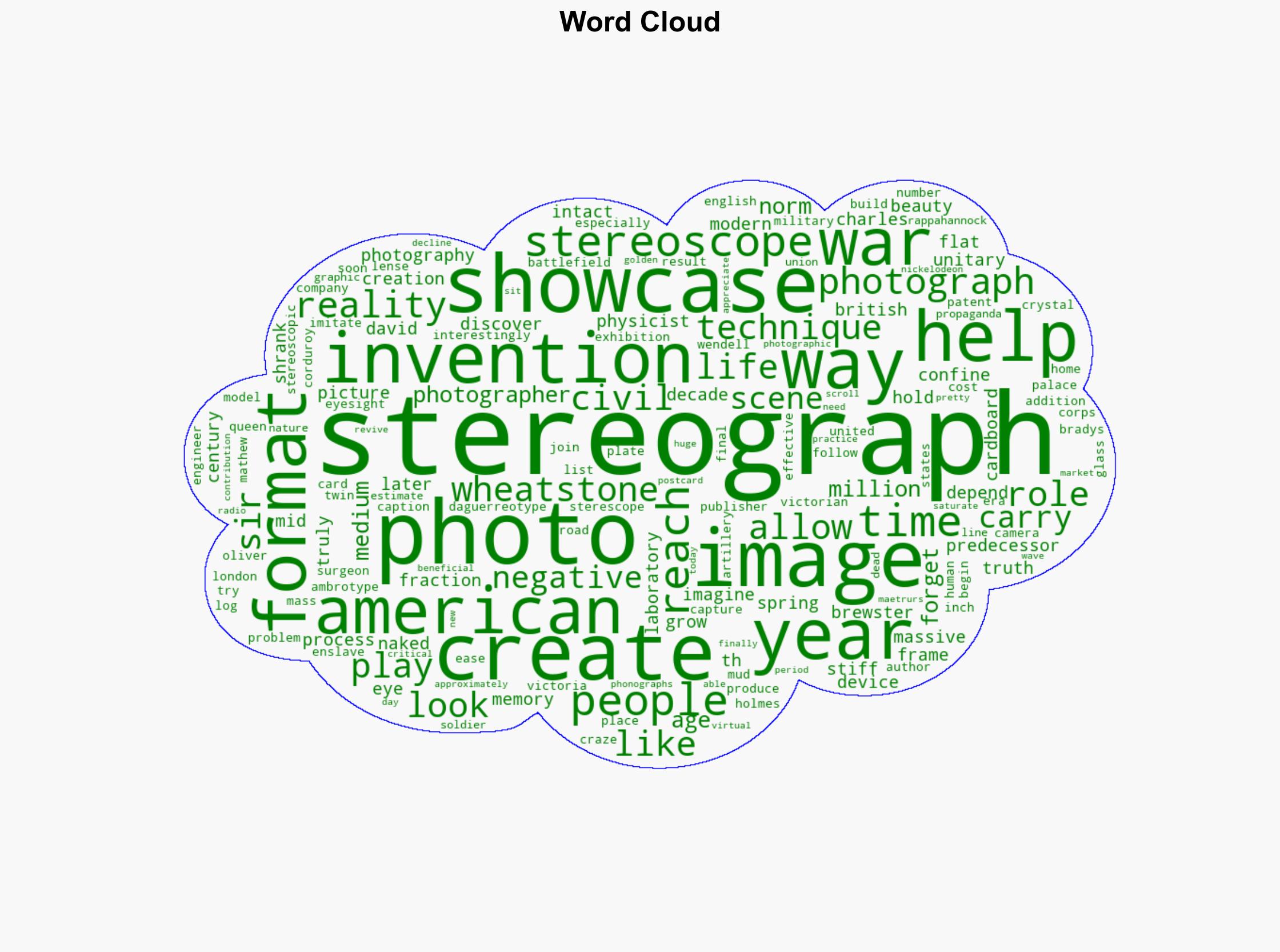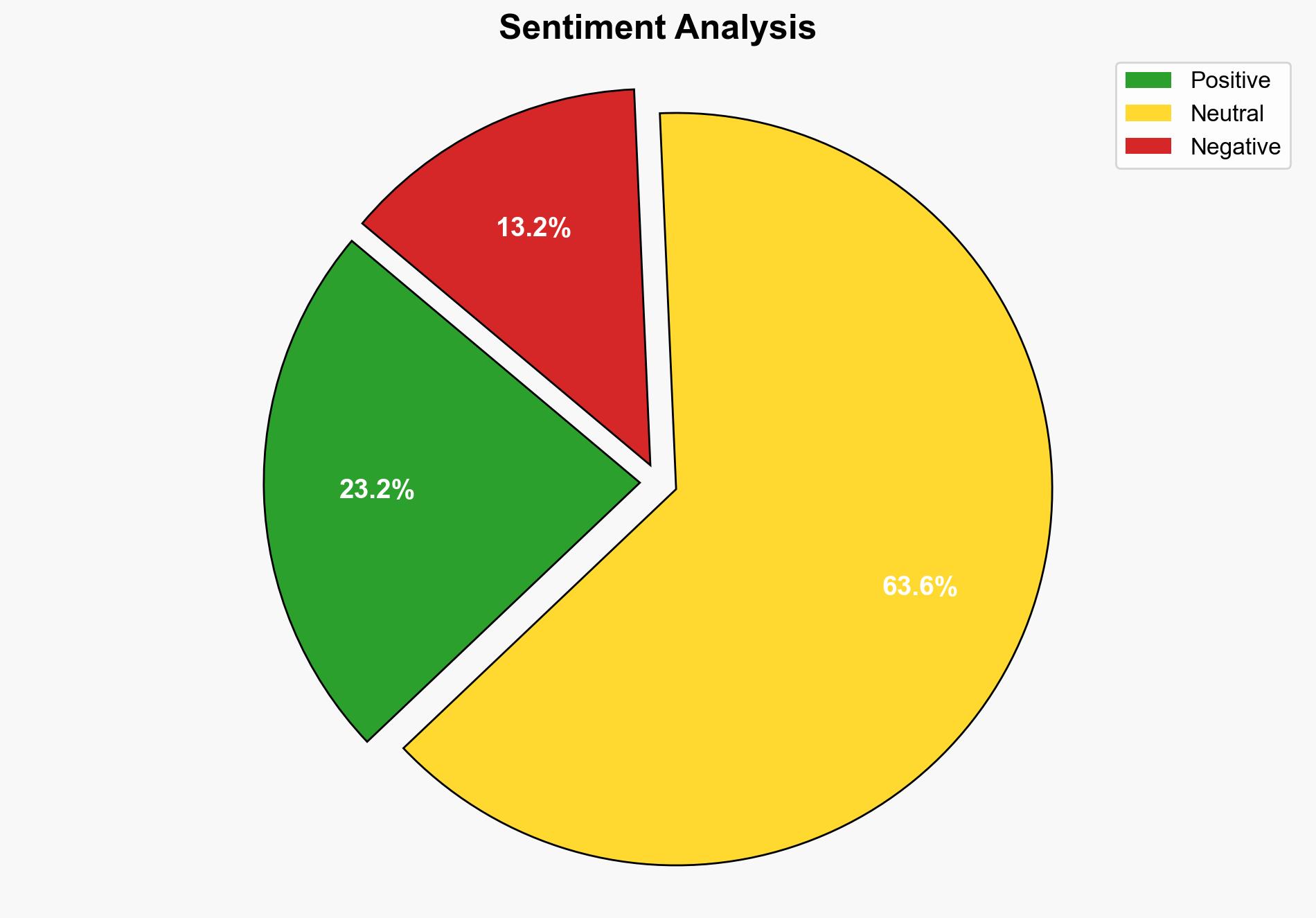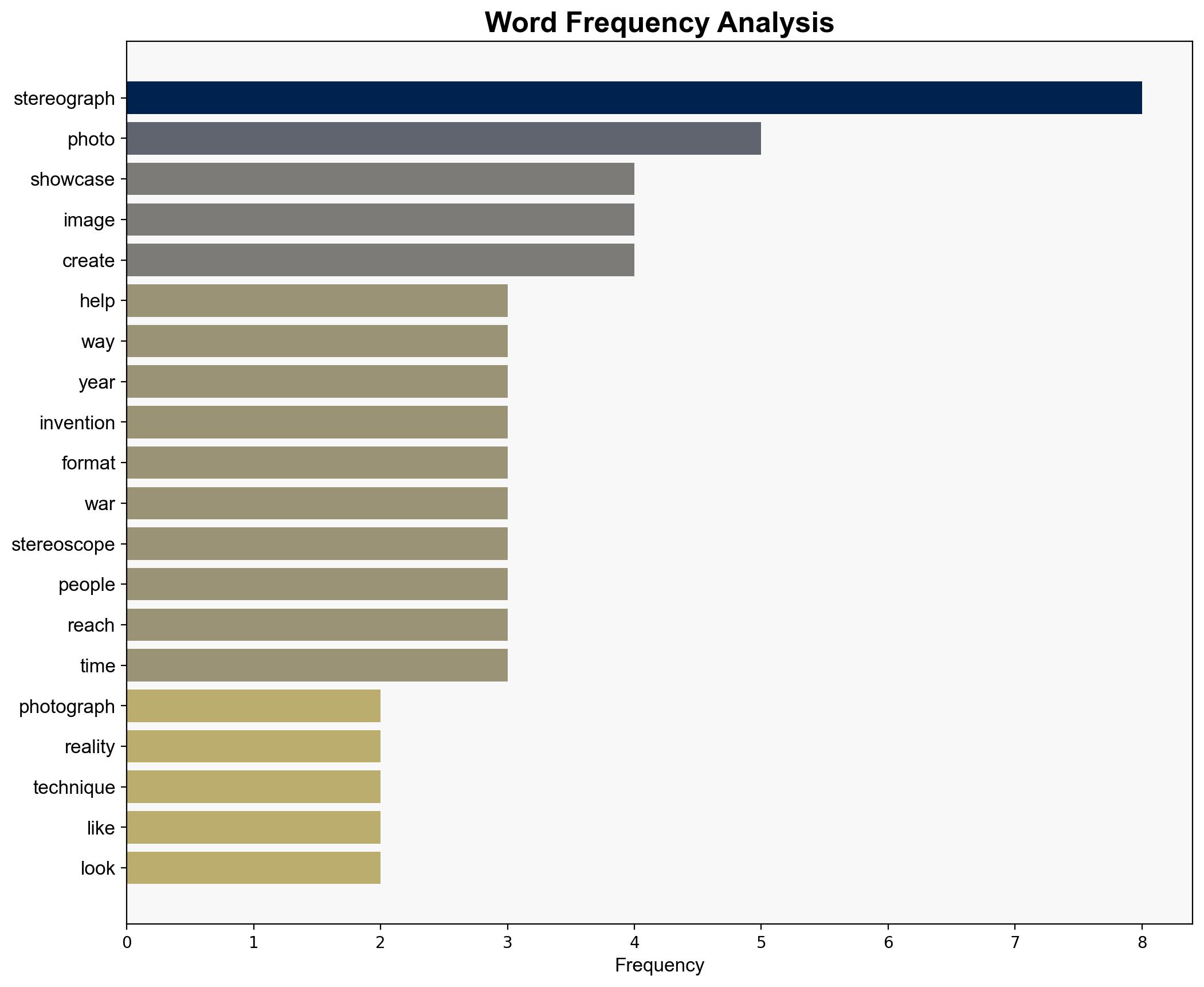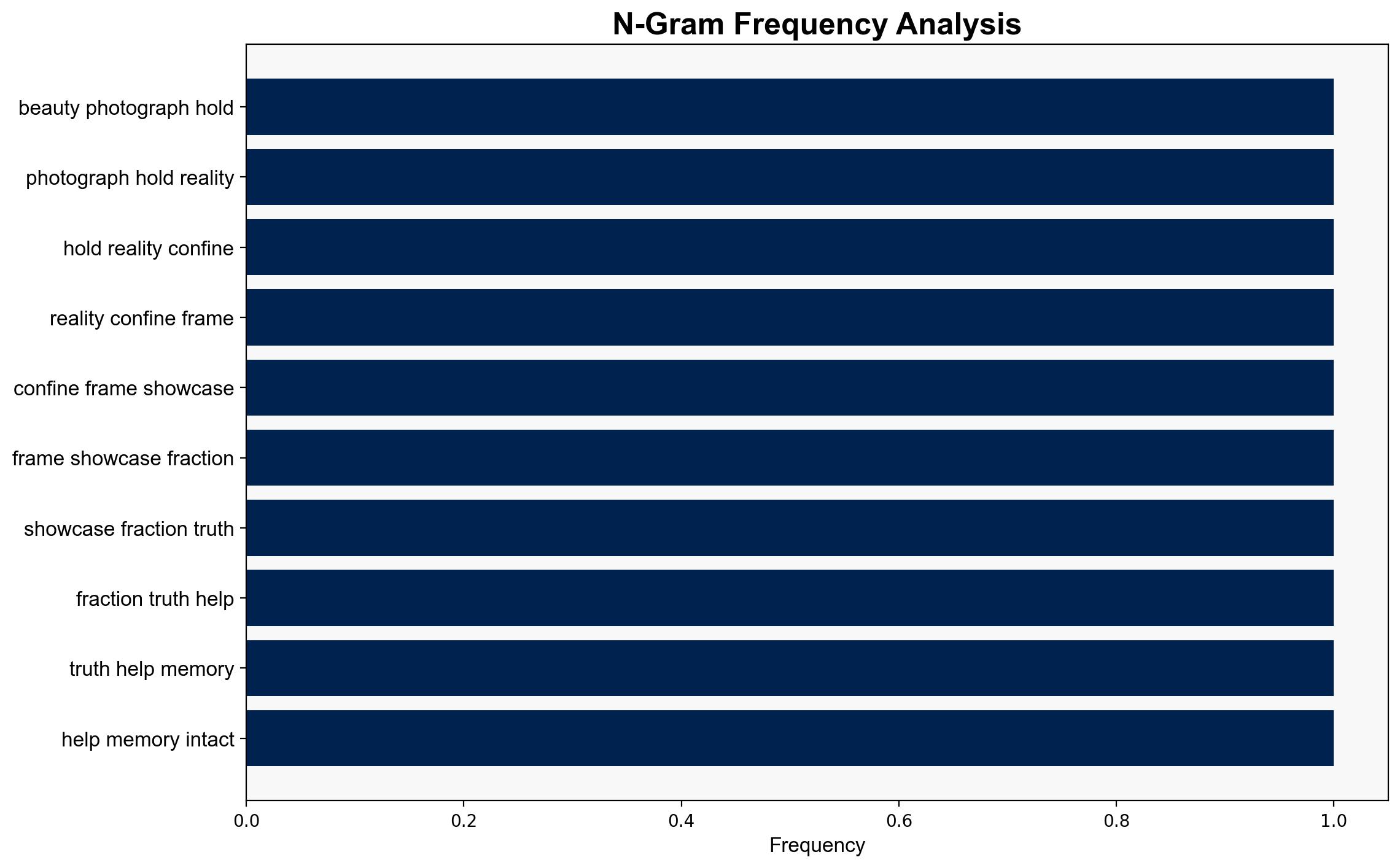This Photography Format Let Americans See the Civil War in 3D – Thephoblographer.com
Published on: 2025-10-24
Intelligence Report: This Photography Format Let Americans See the Civil War in 3D – Thephoblographer.com
1. BLUF (Bottom Line Up Front)
The strategic judgment is that the stereograph format played a significant role in shaping public perception of the Civil War by providing a more immersive and realistic view of the battlefield. The hypothesis that stereographs were a critical medium for propaganda and public engagement during the Civil War is better supported. Confidence level: Moderate. Recommended action: Further explore the historical impact of visual media on public perception and its implications for modern information warfare.
2. Competing Hypotheses
– **Hypothesis 1**: Stereographs were primarily a technological novelty that provided entertainment and curiosity, with limited impact on public perception of the Civil War.
– **Hypothesis 2**: Stereographs were a crucial medium for disseminating information and influencing public opinion about the Civil War, serving as an early form of visual propaganda.
Using the Analysis of Competing Hypotheses (ACH) 2.0, Hypothesis 2 is more supported due to the evidence of widespread production and distribution of stereographs, their use by photographers like Mathew Brady, and their graphic depiction of war scenes.
3. Key Assumptions and Red Flags
– **Assumptions**: It is assumed that the widespread distribution of stereographs equates to significant influence on public perception. It is also assumed that the graphic nature of the images directly impacted public sentiment.
– **Red Flags**: The lack of quantitative data on public reaction to stereographs and the potential overestimation of their reach and impact. The snippet does not provide evidence of direct correlation between stereograph viewership and public opinion shifts.
4. Implications and Strategic Risks
The use of stereographs as a medium for visual storytelling during the Civil War highlights the potential for visual media to influence public perception and sentiment. This pattern suggests that modern equivalents, such as virtual reality and digital media, could be leveraged similarly in contemporary conflicts. The strategic risk lies in the potential for manipulation and misinformation through visual media.
5. Recommendations and Outlook
- Investigate the historical impact of visual media on public perception to inform modern information warfare strategies.
- Develop frameworks to assess the influence of emerging visual technologies on public sentiment.
- Scenario-based projections:
- Best: Enhanced understanding of historical media influence informs effective counter-propaganda strategies.
- Worst: Failure to recognize the impact of visual media leads to unchecked misinformation campaigns.
- Most Likely: Incremental advancements in understanding media influence improve strategic communication efforts.
6. Key Individuals and Entities
– Mathew Brady
– Oliver Wendell Holmes
– Sir Charles Wheatstone
– Sir David Brewster
7. Thematic Tags
national security threats, information warfare, historical media influence, visual propaganda




